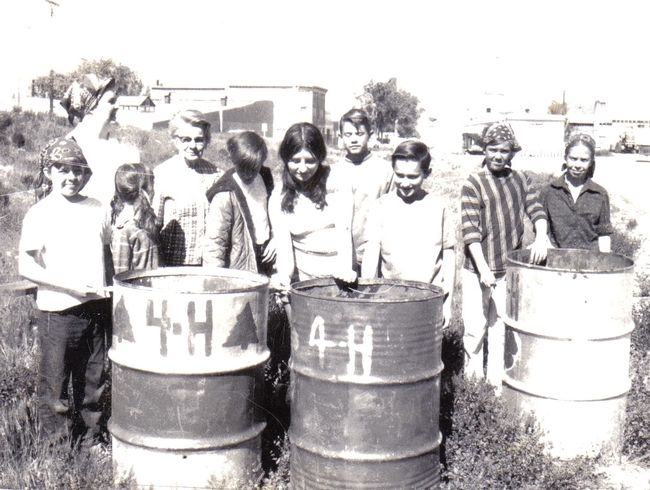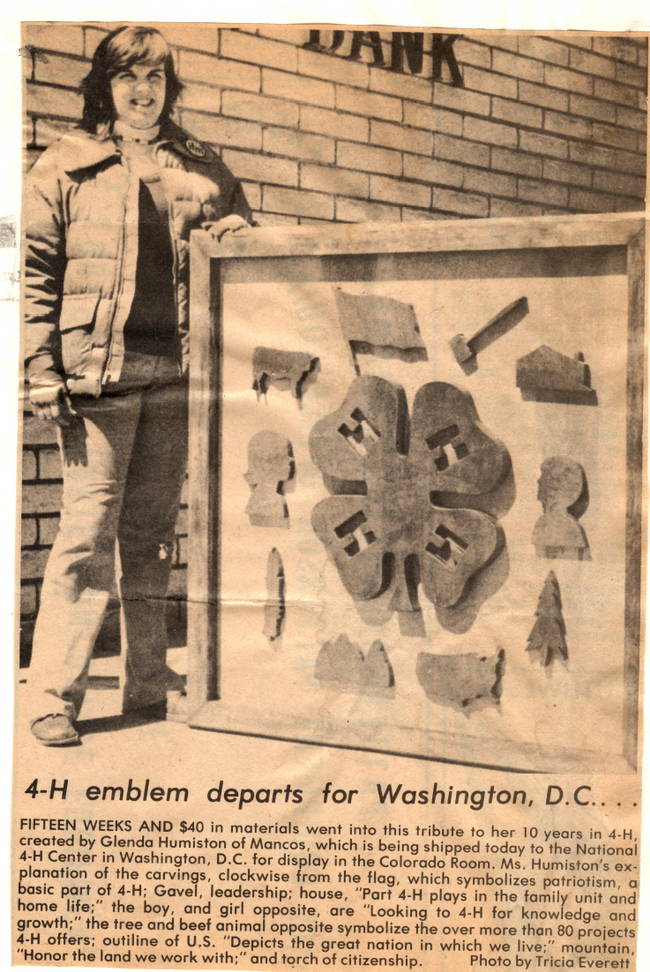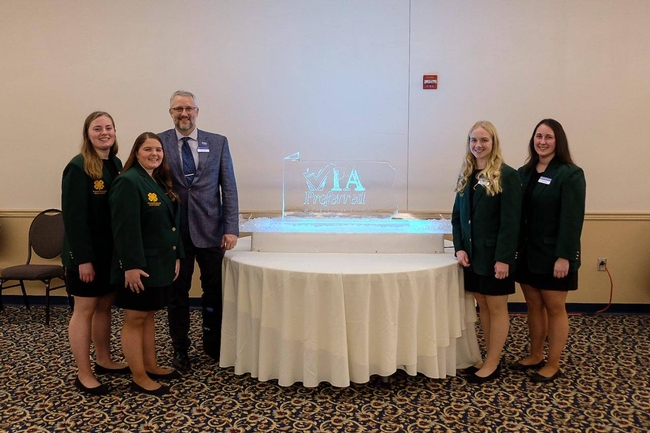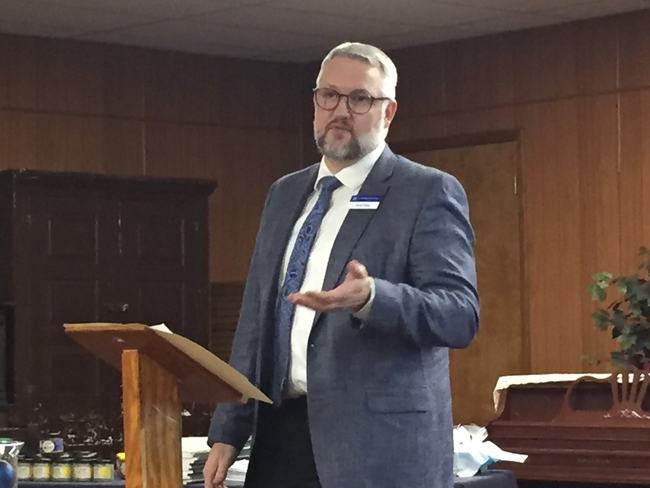- Author: Mike Hsu
If you're on a video call with Glenda Humiston when she's in her home office, you'll see the sign right above her left shoulder, prominently displayed: “4-H CLUB MEMBER LIVES HERE.”
It's the same sign that hung on her childhood home in Mancos, Colorado, in the remote southwest corner of the state. And the sign is a symbol of the influential role 4-H has played in the life and career path of Humiston, University of California's vice president for agriculture and natural resources.
“I asked if I could have it, and my dad was like, ‘Yeah, sure, I think it belongs with you' – which really annoyed my sisters, quite frankly,” she said with a laugh. “But I love having it.”
Humiston – and all four of her younger sisters – were active in 4-H during the late 1960s and 1970s. Joining the Mancos club as soon as she was able to, at roughly nine years of age, Humiston participated through high school. She even did collegiate 4-H at Colorado State University.
For National 4-H Week (Oct. 1–7), Humiston – who leads UC Agriculture and Natural Resources, the umbrella organization under which California 4-H operates – sat down for an interview about the profound impact of 4-H on her life.
You started out by showing dairy cattle and beef cattle, but you quickly broadened the scope of your 4-H experience. What else did you do in 4-H?
I did a lot of projects, not just showing the livestock – I did veterinary sciences; I did demonstration talks; I did conservation; I did woodworking. In fact, I got Reserve Grand Champion at the Colorado State Fair in woodworking one year. I made a tack box for showing livestock; I did some inlaid imagery in it. I also did a nice piece that I donated to the National 4-H Center in D.C. that, for many years, was their big artwork in the lobby that you see when you enter. [See photo at right.]
I also really enjoyed public speaking; I competed in that. Part of that was strategic – everybody turns in beef or something like that, and not very many kids were doing record books on public speaking, so I thought it gave me better odds. [Record books are kept by 4-H participants to document their progress on a project and can be submitted for competitions.]
I actually have one of my speeches about being an environmentalist when I was quite young. A little ahead of my time there. My mother said I was a very preachy child – and that was one of the times that I was!
Of the many wonderful experiences you had, what are some of your favorite aspects and memories of 4-H?
I really love the record book. I think that's one of the things about 4-H that makes it different than a lot of other youth programs. We were taught to keep a record – particularly important for showing market animals – including accounting and keeping our books: like how much did we spend on that animal and on feed and equipment. At a young age, you're learning a lot of life skills that way.
And things like the community engagement, the public speaking, these are all important skills that you just don't get unless you're out there actually doing something with it. Sitting in a classroom is not the same.
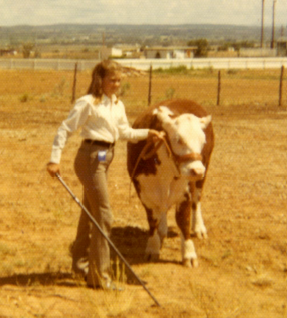
How did 4-H open your eyes to the possibility of college?
As a young person, I wasn't even thinking about college so much – I like to say that one of the reasons I even thought about going to college was 4-H, because we used to go to the Colorado State University campus in the summer for the state 4-H conference. Staying in the dorms, wandering around the campus and having the meetings there – meeting kids from all over the state – it made me feel like, “Wow, I could do this!”
I'm the first one in my family ever to go to college, and there just wasn't anybody in the family to talk about what that involved or what it looked like or anything.
That's why nowadays I think our “Juntos” program is so important. I love that we take Latino kids to a UC campus. I think the numbers I've seen are at the beginning of the week, something like 20% of them think they might go to college, and at the end of the week it's jumped to something like 80 or 90%. It makes a big difference, having the chance to see and feel.
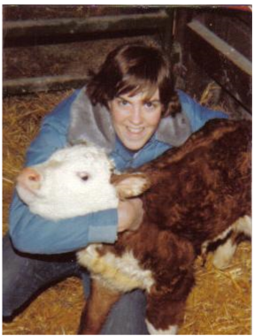
How have you seen 4-H evolve and change, and how will it continue to adapt to the times?
I love the fact that we're doing these SPIN clubs – these special projects that are a little shorter term. I think that's a great evolution. Not every family in this day and age can sign up for the whole-year, club program. That's a lot for parents to take on being volunteers and project leaders.
Having the in-school and after-school options and six-week and nine-week options opens it up to a lot more kids. And frankly if we can get them interested in the short-term special projects, then maybe they will join the club program.
I love the fact, too, that 4-H really tries to be inclusive. 4-H has really been always very inclusive; I actually was invited to be a keynote speaker at a conference in Ohio – at The Ohio State University – about four years ago. Several states got together to talk about LGBTQ 4-H kids and youth, what were the challenges they were facing and how we were serving them. I thought it was fantastic that Ohio State and these other universities put on that event; conversations were mostly about making sure those youth felt safe participating in 4-H. It's vital that we all strive to ensure that 4-H is for everybody.
Now we would like to hear from you, 4-Hers! Tell us how 4-H has made an impact in your life, and share a favorite memory or two, by posting in the Comments box at the bottom of this story.
- Author: Mike Hsu
Between 4th and 8th grade, Brent Hales had acquired from those years in 4-H a lifetime's worth of skills, a group of lifelong friends, an expanded perspective on the world – and the track suit of his dreams.
The middle child of seven kids, young Brent knew his family couldn't afford to buy a track suit off the rack. So he saved up money, bought the Navy blue fabric and pattern, and took on sewing as one of his many 4-H projects during the 1980s. Just one problem: he ended up making it inside-out, with the fuzzy side facing outward.
“And then, by the time I actually completed it, I had outgrown it, so I gave it to my younger brother,” Hales recalled with a laugh.
Hales still enjoys sewing, although he rarely finds time for it, given his many duties as UC Agriculture and Natural Resources' associate vice president for research and Cooperative Extension.
One of his responsibilities is helping to oversee the 4-H program in California, which, along with its counterparts across the country, is celebrating National 4-H Week Oct. 1–7. In a recent interview, Hales shared some of his favorite experiences as a 4-H club member growing up in Aurora, Utah, as well as some of the enduring impacts from his participation.
The mere mention of 4-H must bring back a torrent of memories, images and stories. Can you share one experience that stands out for you?
At the end of the summers, the leader of our horse club, Dan Thompson, would take us on a weeklong horse ride. In order to qualify, you had to demonstrate horsemanship, you had to be able to take care of your horse, and show a certain amount of leadership.
Dan had the kids take the lead; he planned the route but then he would ride in the back. Each day of the horse ride, we would take turns at various aspects of leadership within the week. We would get to a point and we would discuss where we were going; we would discuss points along the trail that we needed to be looking for. But, invariably, all with him in the back, allowing us to lead. He wanted us to lead the whole thing.
You could imagine sending a group of 11-, 12-, 13-year-old kids on a weeklong horse ride with a guy would be daunting enough. But the most important thing you need to understand is the amount of trust that we had in him, he had in us, and our parents had in him – because Dan was blind.
He had gone blind late in life. He knew the trails well enough that he could describe what we were going to see, and he could describe where we were going to stay, but he left it up to us to share information and lead.
You think about the types of skills that it taught us – I have cold chills thinking about that – and the confidence that it instilled in us was so powerful. In a community where less than half of the kids went on to a four-year degree program, all 11 of us in the horse club completed four-year degrees, and all of us are continuing to be very successful.
In addition to leadership skills, public-speaking skills, sewing skills and horsemanship…what else did 4-H teach you?
We actually got involved quite a bit in the arts – the visual arts, the performing arts. Because of that, I went to college on a vocal performance scholarship, which I tie right back to 4-H.
We put on an annual musical at the county fair, which translated to being involved in musicals at school and other performing groups. It paved the way for me to go to a much better school than probably was in my academic trajectory otherwise, so I went to BYU as an undergrad.
I realized very quickly how out-classed I was in terms of the vocal performance and ultimately changed majors – but I stayed involved and had the opportunity to do quite a bit of traveling and touring with various musical groups. In the last three years, I've sang at both Carnegie Hall and the Kennedy Center, as part of ensembles and groups. What a long tail my 4-H involvement has had, in encouraging my love of music and of performing!
In what other ways did 4-H shape who you are today, personally and in your career trajectory?
My hometown of Aurora was settled by my fourth great-grandfather, so I was actually related to about 85% of that small town. And so I had a very myopic view of what the world looked like.
What 4-H did was it showed me that there's a much larger world out there. Because of 4-H, I engaged with different kids from different backgrounds, different ideologies, different life expectations than that of my own. And it opened a world I never knew existed, number one, and that I had a place in that world.
So the thought of moving from my safe, rural community…when I was a little kid, that was the last thing that I wanted. But after engaging with kids from not just across Utah, not just across the country, but across the world, it created a hunger in me to learn and to know and to experience. And that has yet to be satisfied!
Every time I remember and relive my 4-H years, I'm reminded of why I do this job – to enable others, perhaps, to be that kid that I was, and see beyond what their worldview is, or the limitations of their culture, identity and hometown.
On top of your 4-H role as a part of the leadership team at UC ANR, you're also on the strategic planning board for the national 4-H organization. How has 4-H continued to evolve over the years?
With COVID, when I was at Penn State, we shifted online and we saw a whole new generation of kids who would not have ever joined 4-H as a result. We created statewide programs, instead of the traditional clubs, and that brought together kids who normally would not have been drawn to it. And instead of meeting face-to-face, we met virtually and we sent out activity boxes ahead of time. Then, post-COVID, what surprised us is that the online clubs – the clubs we kind of anticipated going away – those actually continued to grow.
So how we reach the kids has evolved as much as the type of kids that we are seeing come in. And it has had to – if we marketed 4-H to an ever-shrinking rural population of on-farm kids, it would quickly become irrelevant. And so the way we market to them, the way we bring them in, the way we encourage and facilitate discussion, the way topics and areas of interest are identified – those continue to evolve and I hope will drive the next iteration of what 4-H looks like. Because it doesn't look anything like what I grew up with – granted, that was a long time ago, over 40 years ago! And I would say in 10 years 4-H probably won't look like what it looks like now. And that's a good thing.

